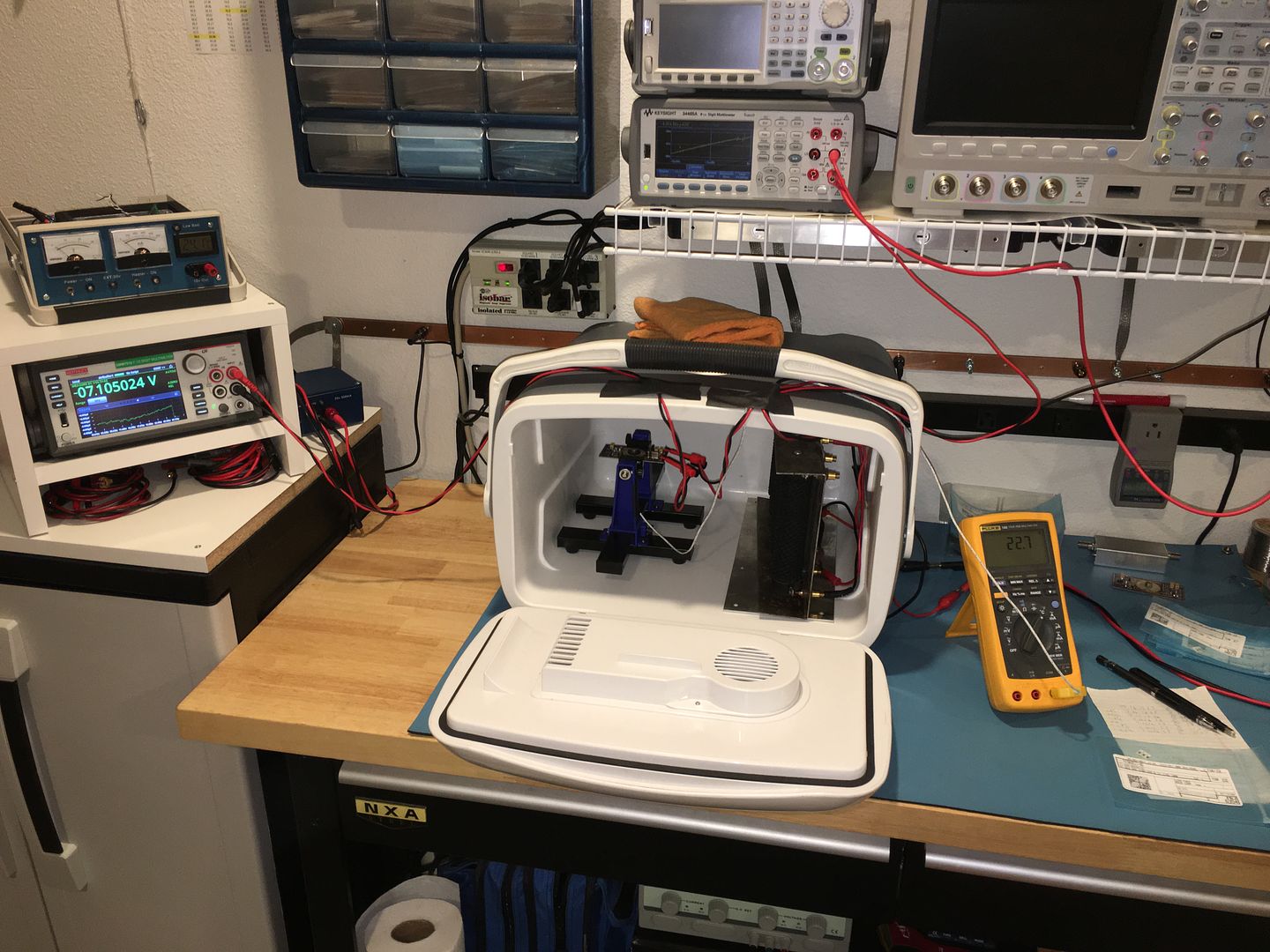Regarding the TC resistor and the LTZ1000A, all three of mine showed about 0.1 ppm / K negative TC without the TC resistor. The 400K value is just a ballpark starting point it seems. I found one needed 330K, one 390K and one 470K to achieve similar end results. All three show the same behavior with the TC resistor in place, the TC slides downward slightly from 10deg C to about the 24deg C point, then it will level off or show a slight positive TC around about 28deg C and onward. The TC dropped from the 0.1 ppm / K to less than 0.05 ppm / K. I have been testing from 10deg C to 50deg C with a very crude manual slope control (but it works). I have seen too aggressive temp slope gives false results as not all of the parts on the reference board have had time to thermally stabilize. If the temp is increased from 25 to 35 deg C, in say 10 min (1 K / min), my references will show a more positive TC while warming, then settle down in value after the temp has stabilized. I have seen much better/stable results with a less aggressive slope, around 10 K / hour or more.
I use a small portable cooler as like in the link above but the air movement inside is too disruptive. I found I can avoid this by using some frozen cold packs, place everything inside and let it cool to about 8 deg C, then remove the ice packs and start taking measurements as it slowly warms from 10deg C to near room temp (takes about 2 hours). Then I use some large wirewound resistors in the cooler and my lab supply to gently warm from there, starting off at about 5 watts which gets me to about 30 deg C, then increase the wattage by 5 watts every 5 deg C. Its crude, but it works.
